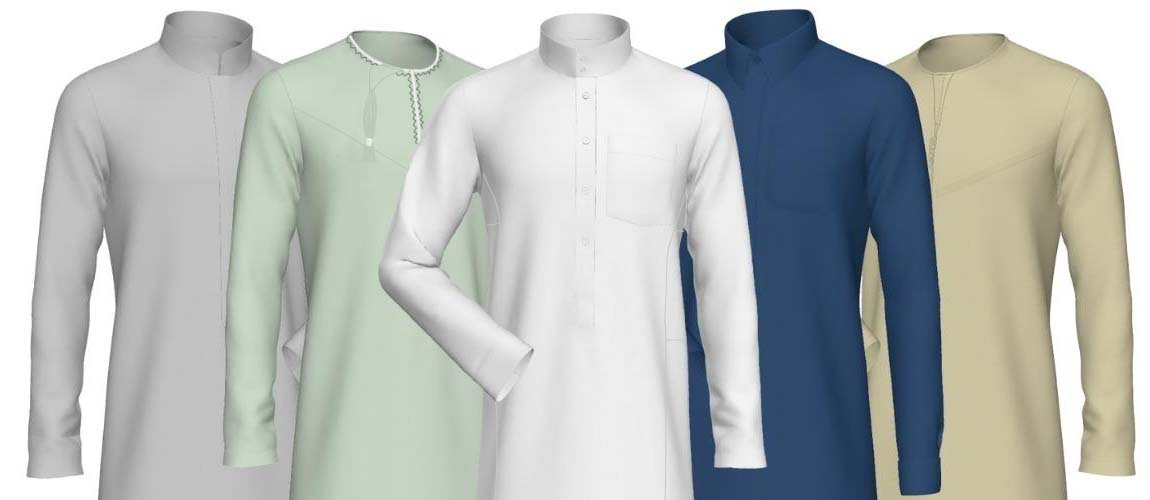Before visiting middle eastern countries, it is essential to learn what is the difference between a thobe and dishdasha because if you're fond of travelling and have already been to many countries, you can become a source of uplifting cultural appreciation by learning the specifics of a particular region. Visiting places that genuinely reflect their religion has moulded their cultural values concerning their teachings.
It is a good fortune for all of us that this world celebrates the diverse patterns of cultural richness, especially the traditional costumes. Such attire reflects the true meaning of a community's heritage and values.
For instance, the typical Middle Eastern dresses are thobes and dishdashas – both terms are used interchangeably because these are long robe-like dresses whose characteristics are often easy to mess up. However, both carry exquisite features that set them apart per their regional differences.
Origin of Thawbs and Dishdashas
Regardless of originating among the Muslim community in the Arab world, thawbs and dishdashas are famous attires for men. Both tunic-like dresses are typically made of weather-friendly fabrics. Cotton is preferred in summer, while the frigid season suggests using insulating materials, such as wool or polyester.
White colour is the typical choice that men wear in daily routine as well as on special occasions or official ceremonies, often coupled with a full-length and open-front gown that symbolises an addition to wealth, social status, and masculine personality. Depending on individual choices and preferences, other monochromatic tones could be brown, blue, grey, or off-white.
A Closer Look: What is the Difference Between a Thobe and Dishdasha?
It is challenging to pinpoint the particular differences among multiple Arabic attires. But thanks to the efforts of natives and many others, including travellers, designers, and relevant researchers of the field who made us familiar with what is the difference between a thobe and dishdasha.
Let's dive into the individualised salient features of the classic men's wear of the Middle Eastern region.
Regional Differentiation
Despite being almost similar to each other and interchangeable usage of the terms, the regional differences between thawbs and dishdashas are evident from their respective cultural roots. The people of Saudi Arabia, Qatar, and Kuwait use the terms' thawb' and' tobe.' At the same time, the natives of the United Arab Emirates, Bahrain, and Oman prefer to name their classic costumes as 'dishdasha.'
Sleeve Styles
The quickest way to judge what is the difference between a thobe and dishdasha is to check the stitching style of their sleeves.
The sleeves of the tobes are narrow and full-length, and the cuffs comprise an embroidery pattern that matches that on the neckline and front placket. In contrast, dishdashas have wider sleeves that offer ample airflow and comfort in regions with extreme temperatures. Such roomier and more relaxed sleeves are significantly in demand by Arabian men concerning the environment in which they live.
Colour and Choice of Fabric
The colour and choice of fabric to stitch dishdashas and tobes resemble in many ways. Neutral and earthy tones of the tobes represent the desert landscape, while white-coloured tobes symbolise simplicity and purity. Dishdashas are mostly made of cotton fabric – white.
Styles and Patterns
Even though both are flowing robes that reach from neck to ankle, some subtle features make it easier for you to learn what is the difference between a thobe and a dishdasha. Thawbs typically feature delicate yet complex embroidery patterns around the collar or neckline, cuffs, and sometimes on the placket or button place. These cultural mosaics demonstrate the traditional way that showcases the cultural heritage of the wearer.
On the other hand, dishdashas comprise minimum to negligible embellished patterns. They are often stitched in V-neck collars, allowing for comfortable movements in hot and arid weather. Such most straightforward designs demonstrate the influence of the desert lifestyle.



